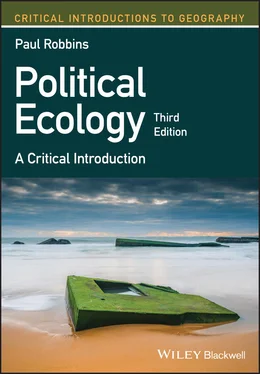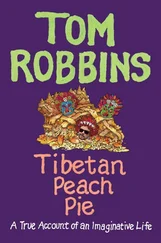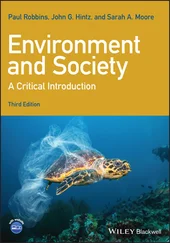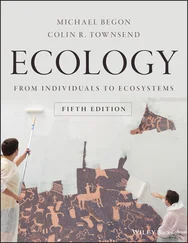From sewer socialism to mitigating floods: hazards research
The politics and economics of environmental issues, though briefly eclipsed by environmental determinism in the early twentieth century, never fully left the scientific agenda. With increasing recognition of the vulnerability of modern society to environmental perturbations like floods, earthquakes, droughts, and fires, as well as to the toxins of its own invention, a policy‐oriented avenue of research began to open in the early twentieth century. Focusing both on “natural” and “technological” problems faced by human communities, hazards research took as its goal the rational management and amelioration of risk – defined as the calculable likelihood of problematic outcomes of human actions and decisions.
This approach emerged in the wake of increasing political urban activism around issues of environmental health and welfare, as settlement house workers and other activists, mostly women, rose to take stock of environmental conditions and the planning regimes that surrounded waste, water, and air ( Box 2.1). The Women's National Rivers and Harbors Congress, Women's Forestry Commissions, and Federation of Women's Clubs throughout America joined with socialist/progressive mayors, unions, and municipal leagues during this period to champion food safety and urban infrastructure reform. The research component of this “sewer socialism” (named for the socialist party activists of Milwaukee who championed infrastructure and worker health; see Beck 1982) was informal but thorough, and activist researchers like Alice Hamilton and Florence Kelly performed path‐breaking street‐level analyses of environmental hazards, revealing relationships between typhoid and plumbing, and between toxins or machinery and workplace injury and death (Bailes 1985; Darnovsky 1992). More formally, Jane Addams, along with her cadre of public‐university‐trained social workers, conducted the first‐ever systematic assessment of the relationship between municipal garbage collection in Chicago's wards and local death rates (Addams 1910).
Box 2.1Jane Addams' Twenty Years at Hull House : Progressive‐Era Urban Political Ecology
Published in 1912, Jane Addams' reminiscences of street‐level ecology in Chicago is almost as fresh today as it must have been at the turn of the twentieth century. Recounting two decades of social work amongst poor, immigrant communities, Addams documents a rigorous and committed urban political ecology.
Hull House itself was a “settlement house,” really a cluster of buildings providing residence and offices for people – all women – to provide social services and education to local communities. The volume is, therefore, a well‐known contribution to social history, recording the dawn of modern social work.
But the most dramatic and immersive parts of the work recount how the women doctors of Hull House doggedly investigated the conditions that created health problems in the community, turning over stones, examining sewage flows, tracking insects, and otherwise piecing together the ecological puzzle of poverty and disease. Notable among the many residents of Hull House is Dr. Alice Hamilton, whose work to uncover the conditions that either caused or exacerbated typhoid outbreaks in Chicago slums resulted in critical insights about sanitation and disease. More than this, however, Addams and her colleagues traced the source of immediate causes to political and economic drivers, mainly the cozy relationship between slumlords and state agents. As Addams reports of Hamilton's work in what might best be described as “shoeleather” epidemiology:
Her researches were so convincing that they have been incorporated into the body of scientific data supporting that theory, but there were also practical results from the investigation. It was discovered that the wretched sanitary appliances through which alone the infection could have become so widely spread, would not have been permitted to remain, unless the city inspector had either been criminally careless or open to the arguments of favored landlords.
(p. 298)
And yet the pragmatic political ecology of Hull House was not always enough to satisfy purist ideologies of the time. In her account of an encounter with Leo Tolstoy during a visit to Russia in 1896, Addams describes being castigated by the aging socialist for dressing too formally and not providing for her own subsistence through farming (pp. 268–269). Leaving aside the strange mismatch of Tolstoy's peasant‐oriented politics against those of the very urban Addams and the immigrant communities with whom she worked, there are echoes here of later debates in political ecology, and radical praxis more generally, about the purity of goals versus the practicality of outcomes. Addams' book, and the work of all those at Hull House, reminds us that “the front is long” in political ecology, and that contributions and insights come from places and methods of enormous diversity. Ideas and actions most productively coexist, rather than compete.
In formal academic circles this pragmatic approach to risk was later rendered in more apolitical terms. In a now classic example of the hazards approach, Gilbert White challenged the conventional way of thinking about and dealing with floods, calling for a rational and somewhat radical alternative. Writing his thesis in the early 1940s, White concluded that the traditional way of dealing with flood hazards – building more engineered structures – is expensive, irrational, and does little to deal with the underlying, fundamentally human problem. Better land use planning and changes in people's behavior could more easily mitigate future impacts of natural flood events (White 1945).
More than simply informing the practical question of flood insurance subsidies and dams, White had gained a valuable insight into human–environment interaction; the traditional distinction of those things natural from those things social is rendered particularly difficult when viewing the environment as a hazard. A flood is a hybrid human–environmental artifact, no more an act of nature than one of planning.
This powerful lever on the problem opened several decades of research into human adjustment to the environment, leading later researchers like Robert Kates and Ian Burton to venture the claim that the environment is actually becoming more hazardous as a result of human development, rather than less so (Burton et al. 1993). The implication that current economic and political structures increase the riskiness of natural events holds tremendous implications for how our society and personal lives are ordered.
As White so profoundly discovered in the 1940s, improved planning by state agencies and individual farmers who lived in floodplains was retarded by the continued reinvestment in subsidies and massive investment in engineered structural solutions like dams and levees. But the urgent question raised by these results – why do structural solutions prevail in the face of better alternatives? – could not be answered within the hazards approach, which focused almost exclusively on individual choice, free markets, and rational regulation. Rather, the issue can only be addressed fully by examining the political economy of floodplain investment, the role of capital in agricultural development, and the control of legislative processes through normative ideologies, vested interests, and campaign finance. Similarly, the risk of floods is not uniformly distributed through populations. Are poor and marginalized groups more vulnerable to such events? What is the role of power in the environmental system and its relationship to people?
These questions raise manifold research opportunities for critical scholarship. As Ben Wisner and Maureen Fordham ask on their radical hazards webpage Radix ( www.radixonline.org):
Читать дальше












